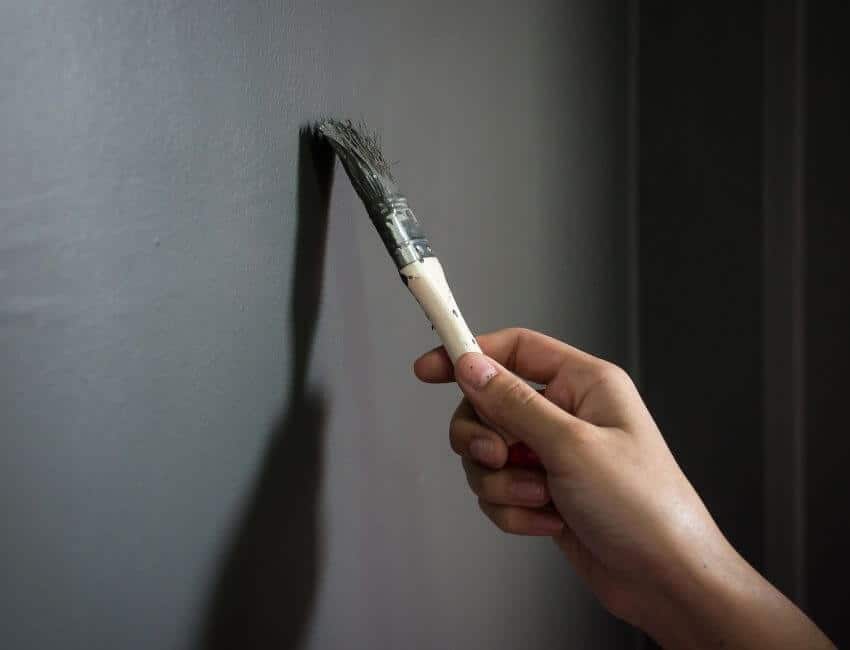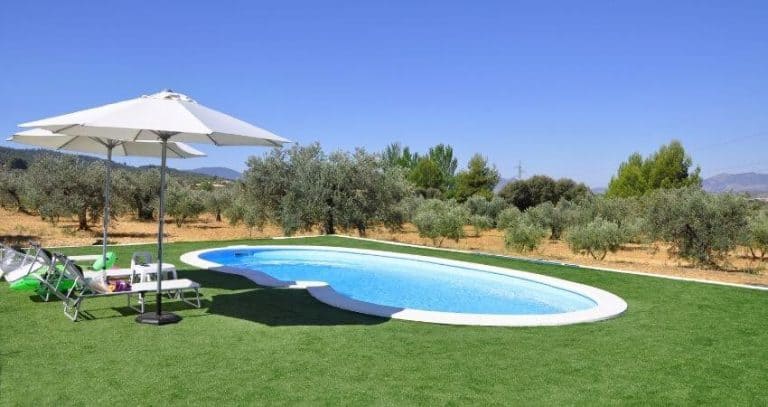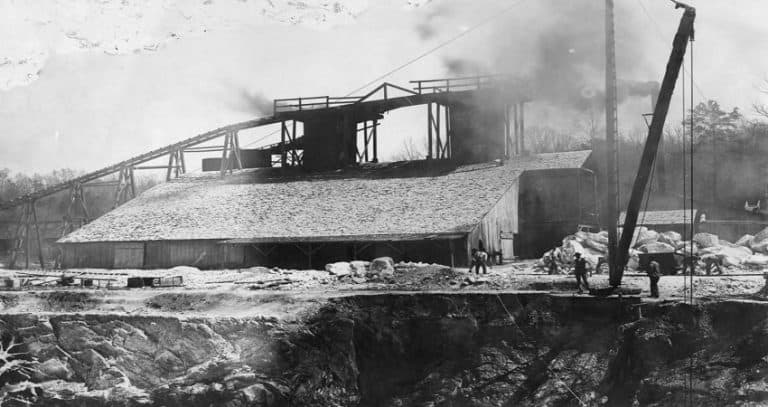Painting Concrete: Will It Look Good and Last?

Concrete painting is the most decadent process for any substantial project. Painting the concrete is a must, and it will be excellent and last. So, it is a big “YES!!”. Now, there are many aspects that we have to keep in mind to paint our concrete.
With a fresh coat of colour, just about every surface can be turned, and concrete is no different. Paint is a feasible alternative to paints and dyes for applying instant colour to lacklustre grey concrete, depending on the application and the look you want to achieve.
Concrete paint is a surface covering that is susceptible to abrasion. For high-traffic areas such as concrete driveways, it is not the safest option.
Let’s get elaborate on our discussion about painting concrete.
Tools required for painting concrete

Every construction work needs a tool. There are some tools which you can buy for doing this work.
What is concrete painting?
Concrete paint is non-reactive and fills the concrete’s surface pores to create an opaque, uniform, transparent pigment. Over time, however, the colour will chip and peel, especially if you do not adequately prepare the surface.
Best Time to paint the concrete
For concrete painting, the trick is the right timing and routine preparatory preparation. In your country, pick a time of year when the temperature is not too cold or hot or when the weather is too warm. The paint should have the correct range of temperature specified.
Outside of your region’s rainy season, you will want to colour your concrete patio. The paint adheres to the concrete and how it dries influenced by rain or snow, so pick a time of year when you know you will have enough dry time. Usually, dry periods to touch and step on are given on the paint’s side can sign. If you paint a covered outside pavement or a garage board, if it’s wet out, you can paint just make sure the water can not spill on the slab and damage your job.
Best concrete paint to use
There are different kinds of concrete paints. But for the best concrete paint, we analyze that three types are most helpful for your work.
At first come, Concrete porch paints engineered to avoid fading, scuffing, peeling, and UV damage are acrylic latex paints. After that come Waterproofing masonry paints designed for brick, but it can also be used to colour basements and foundation walls including concrete.
And last Concrete garage and floor paints which are designed for applications. Like garages, ports for vehicles, basement levels, walkways.
You should use these types of paints. Those don’t harm your efforts and projects.
We will also mention individual concrete coating that will assist you in your concrete painting job. For the overall concrete painting you should use Rust-Oleum Decorative Concrete Coating, When the weather fact comes you can use ‘In The Swim Patio And Deck’.
For your driveway Rust-Oleum EpoxyShield Professional Floor Coating Kit is more comfortable. After that come to your walls, then use RTG Supply Co. Concrete Paint. If you are a budget freak, then you should use Kilz Decorative Concrete Coating.
It’s essential that many people waterproofer coating. Then you can apply UGL DRYLOK Masonry Waterproof. We think these pieces of information give you more comfort and lasting more time.
The principle steps of painting concrete

While painting your wall, you must follow some steps which mostly need.
- Clean the Concrete
As the porous surface continues to trap soil, grease, and oil, cleaning concrete is a crucial first step.
With trisodium phosphate, extract dirt and grease or use a more earth-friendly cleaner like the pre-paint cleaner.
Efflorescence, a white coating that grows on wet asphalt, is eliminated. If you need more muscle brushing, try the phosphoric acid masonry cleaner.
- Strip Old Paint
Through a wire cane, a paint scraper, and plenty of elbow grease, strip peeling or blistering paint indoors.
- Seal interior concrete
Liquid travels quickly through porous concrete, so it is essential to seal interior walls to prevent moisture from entering, facilitate mould growth, and experience the calm, humid basement. There’s a masonry sealer you can use.
- Prime the concrete
A concrete primer, referred to as a block primer, covers the base with pores and evens out. Use external-grade block filler for exterior foundations and walls, Behr’s Structural members Bonding Primer are required, which is also suitable for interior concrete.
- Paint the concrete
For concrete painting, masonry paint is a good alternative since it involves binders that contract with the concrete and extend. No matter how you apply colour, between coats, let it dry for a day. You’ll probably need two or three jackets, so check the long-range weather forecast before you start.
Advantages of Painting Concrete
For elegance, longevity, and fitness, there are several benefits of concrete floors. If you yearn for a modern look and love quick washing, you could work with concrete floors.
To imitate tile, stone, or mortar, there are several ways to paint concrete.

Concrete is easy to clean when adequately painted, and sanitizes much more than carpet or wood. There is incredible harshness in the toughness; nothing will withstand a fall to a concrete surface. Concrete floors might not be the best choice if you have a family, but they will probably be in a smaller environment, such as a back porch or basement.
Printed concrete indeed has its rewards. A new coat of paint or stain will help spruce up the walls and floors of a concrete basement or garage, adding new life to a tired concrete patio. Concrete dyes and colours help to conceal discolouration of the surface and signs of wear and tear, and by avoiding further damage, they prolong the life of the concrete. Also, covering a concrete surface with paint will make cleaning and repairs easier.
Concrete paints and stains help to conceal discolouration of the surface and signs of wear and tear, and by avoiding further damage, they prolong the life of the concrete. Also, covering a concrete surface with paint will make cleaning and repairs easier.
Some Important FAQs
Please go through this question and answer part. These will assist you in understanding the topic above.
Is it better to stain or paint concrete?
Floor and concrete stains usually are more straightforward to apply than oils, but to stay looking new, they need more regular re-application. Concrete colours produce a pigmented, marbled look instead of covering the floor in one whole hue.
Are you able to colour directly on concrete?
For concrete painting, masonry paint is a reasonable choice because it includes binders that contract with the concrete and extend. On concrete, exterior house paint will crack and peel. No matter how you add colour, let it dry in coats for a day.
Do you need to prime concrete before painting?
Generally speaking, priming is so crucial that concrete will still require a primer for good painting performance. However, if it is unpainted, the original surface has to be primed before painting. It’s been peeling.
Is there spray paint for concrete?
You won’t find many spray paints made especially for concrete, but that’s all right. If you use acrylic latex paint that is rated for outdoor jobs, you can’t go wrong. The colour would soak into the pores on new, bare concrete to create a solid bond. For dry-brushing over the base coat, you may also use spray paint.
Do I need to seal the concrete after painting?
It is an important step to cement a painted concrete floor since it provides an additional layer of protection on top of the painted wall. It will make sure you coat the whole bottom with sealant equally and don’t risk staining the furniture. To clear dirt and clutter, vacuum, and adequately clean the ground floor.
How long does paint on concrete last?
To make the substance adhere to porous concrete surfaces, some brands also recommend using an etching primer. Most brands recommend that, based on application, you add a fresh coat every 3-5 years.
Can you paint outdoor concrete?
If the product is meant for exterior use, then every outdoor concrete surface may be painted. Only be sure to review the application, clean the area well before applying, and make sure the manufacturer asks for the correct roller or brush.
Conclusion
Finally, we can say that painting concrete is satisfactory. The concrete should be dry and free of trapped moisture to adhere to the paint properly. While priming for some concrete colours is recommended, many items are self-priming and can be directly applied to bare concrete.
Make sure to follow instructions from the paint maker. Adhere also to the manufacturer’s guidelines during application for minimum air and surface temperatures, especially when painting concrete surfaces outside. And your painting concrete will look good and last that you have wished.

I’m a concrete contractor by trade and have been working in the industry for over 25 years now. I’ve seen (and done) it all when it comes to concrete, and I love sharing my knowledge and experiences with others who are interested in learning more about this amazing material. In my spare time, I enjoy spending time with my family, fishing, and watching NASCAR races.



